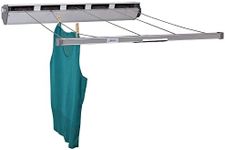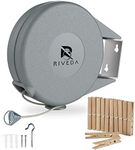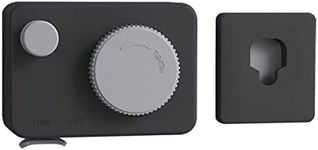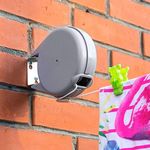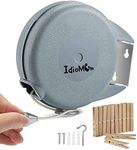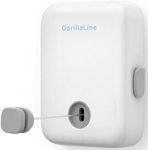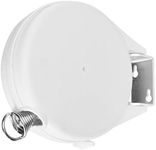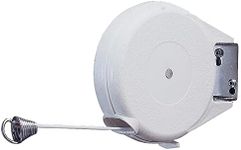Buying Guide for the Best Retractable Clothesline Outdoor
Choosing a retractable clothesline for outdoor use is all about finding a balance between durability, convenience, and the amount of laundry you typically need to dry. Since this product will be exposed to the elements, it's important to consider how well it will hold up over time and how easy it is to use. Think about where you plan to install it, how much space you have, and how often you'll use it. The right clothesline should make drying your clothes outdoors simple and efficient, while also fitting seamlessly into your outdoor space.Line LengthLine length refers to how much total drying space the clothesline provides when fully extended. This is important because it determines how many clothes you can hang at once. Shorter lines, usually under 10 meters, are suitable for small households or limited spaces like balconies. Medium lines, around 10-20 meters, work well for average families and typical backyard spaces. Longer lines, over 20 meters, are best for large families or those who do big loads of laundry. To pick the right length, consider how much laundry you usually hang at one time and measure the space where you plan to install the clothesline.
Weight CapacityWeight capacity tells you how much weight the clothesline can safely hold without sagging or breaking. This is important because wet clothes, especially towels and bedding, can be quite heavy. Lower capacity lines are fine for light clothing and small loads, while higher capacity lines are needed for heavy items or larger loads. If you often wash bulky items or want to hang many clothes at once, look for a clothesline with a higher weight capacity to ensure it stays secure and functional.
Material QualityThe materials used for both the line and the casing affect how well the clothesline will withstand outdoor conditions like sun, rain, and wind. Lines made from coated steel or strong synthetic fibers are more durable and less likely to stretch or snap. Casings made from UV-resistant plastic or rust-proof metal will last longer outdoors. If you live in an area with harsh weather, prioritize high-quality, weather-resistant materials to ensure your clothesline remains reliable over time.
Mounting OptionsMounting options describe how and where the clothesline can be installed. Some are designed for wall-to-wall mounting, while others can be attached to posts or fences. This is important because it affects where you can use the clothesline and how stable it will be. If you have a sturdy wall or fence, a wall-mounted option is convenient. If not, look for models that come with their own posts or can be installed in the ground. Consider your available space and choose a mounting style that fits your outdoor area and is easy for you to set up.
Retracting MechanismThe retracting mechanism is what allows the line to be pulled out for use and retracted back into the casing when not needed. A smooth, reliable mechanism makes the clothesline easy to use and helps keep the line clean and tangle-free. Some mechanisms are spring-loaded for automatic retraction, while others require manual winding. If you want maximum convenience and minimal effort, look for a clothesline with a smooth, automatic retraction. If you prefer more control, a manual option might suit you better. Think about how often you'll use the clothesline and how important ease of use is for your routine.
Locking SystemThe locking system keeps the line taut and in place when extended. This is important because a loose or sagging line can make it hard to hang clothes properly. Some clotheslines have simple hooks, while others use more advanced locking mechanisms to keep the line tight. If you want your clothes to dry evenly and avoid them bunching up, choose a clothesline with a reliable locking system that is easy for you to operate.

